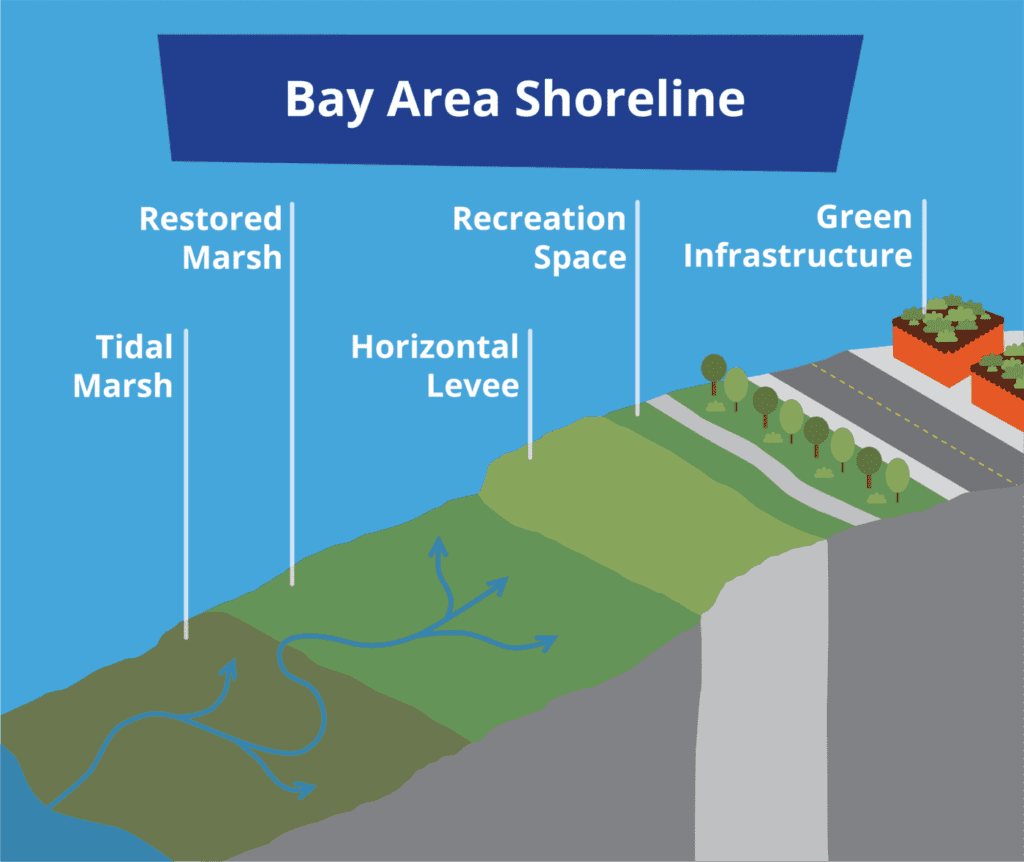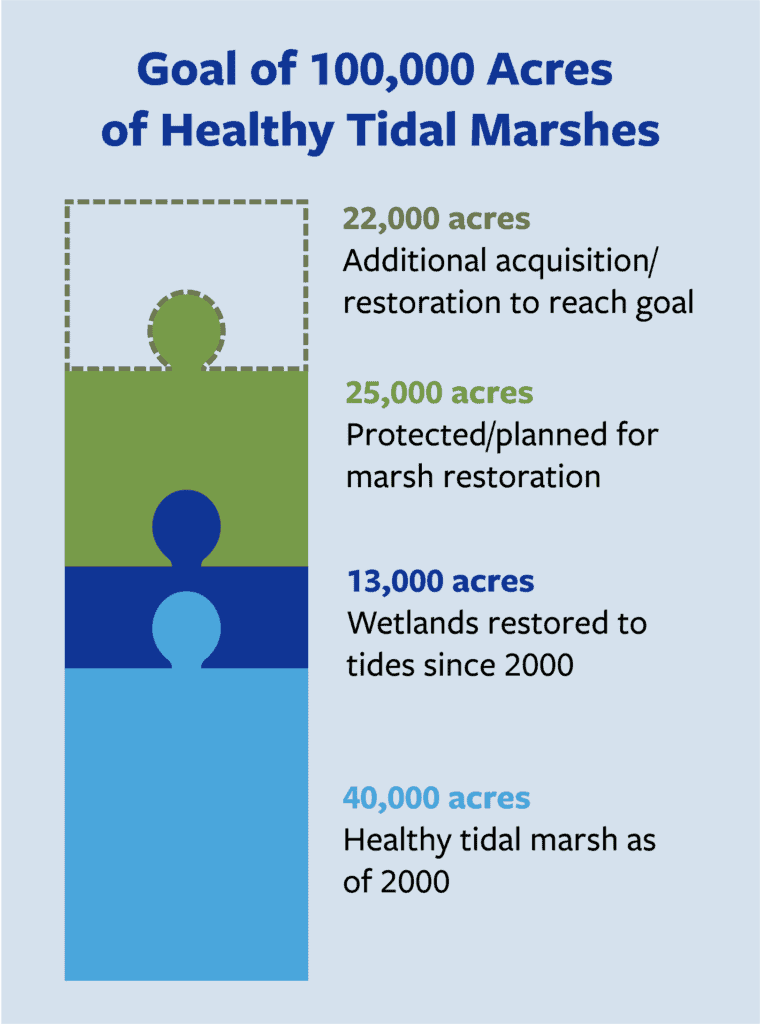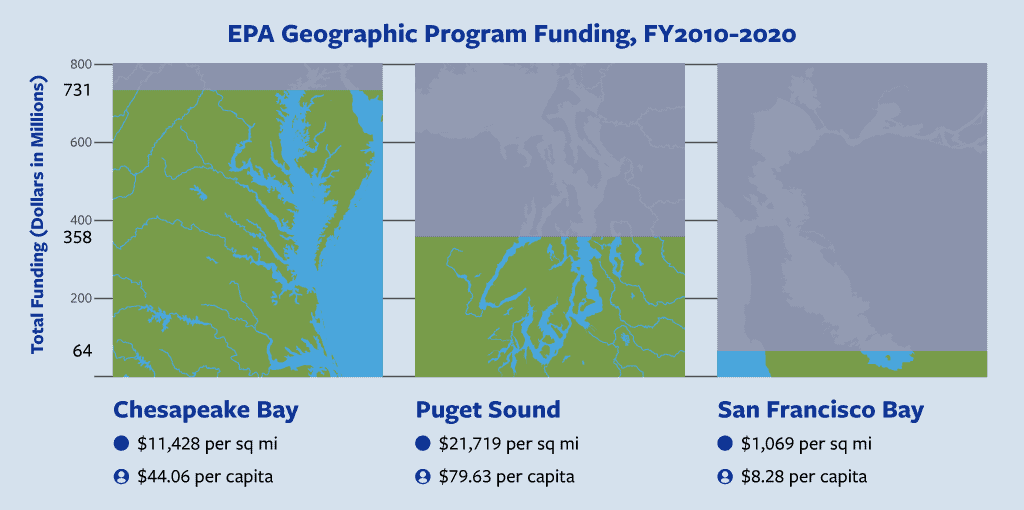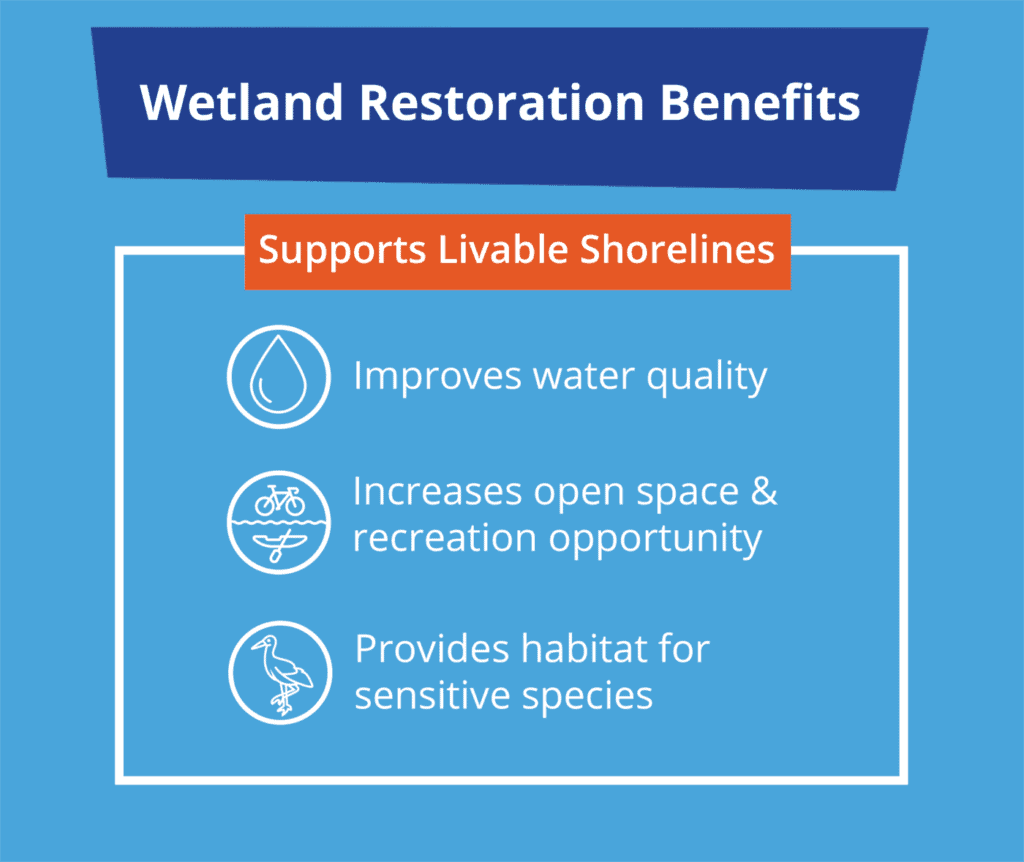Take a walk along the Bay Trail and it’s easy to marvel at the beauty of the San Francisco Bay. But it’s also obvious how human development has shaped the area. Where there was once a flourishing expanse of tidal wetlands and mudflats, the Bay shoreline today is dominated by neighborhoods, infrastructure (highways, water treatment plants, and airports), and industry (ports, warehouses, and refineries). When climate change raises sea levels in coming years, many of these areas will be threatened with devastating flooding.

Restored wetlands are crucial to protecting shoreline communities and infrastructure from being inundated by sea level rise because they serve as a natural buffer between development and the Bay. Healthy tidal marshes act like a sponge to absorb storm surges during significant weather events and release that water later. And marshes can adjust as seas inch higher. Restoring elements of the natural shoreline can reduce flood risk, but that requires more funding from the state and federal governments to construct wetlands and keep communities safe.
History of Development

As the Bay Area’s population grew, much of the Bay’s natural wetlands were diked and drained for development and agriculture, used as trash dumps, and converted into salt evaporation ponds. It’s estimated that more than 90% of the historic tidal marsh were destroyed over the past 200 years, leaving current shoreline communities without the natural protections that wetlands provide.
In 2007, we published Greening the Bay, which identified the need for public funding to achieve the science-based goal of 100,000 acres of restored tidal marsh throughout the Bay. More than 36,000 acres of restorable shoreline had already been acquired by state and federal agencies, but the cost of returning these areas to functional tidal marsh was estimated at $1.5 billion. We underscored the many benefits of wetlands and proposed a mix of local, state, and federal investment.
Measure AA – The First Piece of the Puzzle
In 2016, Save the Bay led the successful campaign to pass Measure AA, a $500 million parcel tax to finance marsh projects through the San Francisco Bay Restoration Authority. Thanks to the support of Bay Area voters, the Restoration Authority has already awarded more than $100 million to 22 projects, many of which are within the San Francisco Bay National Wildlife Refuge Complex.
Projects like the Montezuma wetlands in Solano County, North Richmond Living Levee in Contra Costa, and the South Bay Salt Ponds are already making a difference. But we are in a race against time to start revegetating more marshes before rising seas make that more difficult and expensive. To accelerate restoration, we need the state and federal governments to match funding that Bay Area voters are providing.
Federal Funding Falling Short
Compared to other major estuaries like the Chesapeake Bay and Puget Sound, the US Environmental Protection Agency (EPA) provides relatively little funding to support environmental quality, habitat restoration, and pollution prevention in the Bay Area. Over the last decade, EPA provided only $64 million in funding for SF Bay, compared to $358 million for Puget Sound, and $731 million for Chesapeake Bay.

New Optimism for State and Federal Support
This funding disparity may finally change thanks to an effort being led by U.S. Representative Jackie Speier (San Mateo). Under her proposed San Francisco Bay Restoration Act (HR610), EPA could spend $250 million over 5 years for projects to restore habitat, reduce pollution and benefit wildlife in the Bay. This bill would also establish a San Francisco Bay Program office within the EPA to coordinate efforts between federal, state, and local partners including the SF Bay Restoration Authority. We are working closely with Rep. Speier’s staff to secure this increased federal support.
State legislators in Sacramento also recognize that California needs to invest more in climate resilience in the face of devastating wildfires and the increasing threat of flooding. Members in both the State Assembly (AB1500) and Senate (SB45) have introduced versions of a climate resilience bond for voters statewide to consider in 2022. The bonds would fund urgently needed strategies to protect residents from climate risks, and promote the health of our endangered forests, rivers, and wildlife. Save The Bay and our allies are advocating for more funding in these bonds to accelerate Bay marsh projects faster than Measure AA resources can accomplish alone. A climate bond is our best chance to secure state funding to restore more Bay wetlands ahead of rising seas.
These state and federal funding increases are the missing puzzle pieces needed to get us closer to the goal of 100,000 acres of healthy Bay tidal marshes.
A Look Ahead

By working to save the Bay, we can better protect the communities that surround it. The benefits of doing so extend beyond natural flood protection. A healthy shoreline also sequesters carbon, provides native animal habitat, improves water quality, and creates recreation opportunities for people to experience and connect with the Bay – all of which improve human health and wellbeing. To achieve these benefits, the state and federal governments must invest more to protect the Bay from climate change and pollution threats.
That vision is starting to resonate in Washington and Sacramento. You can support this effort by contacting your Congressional representative, as well as your State Senator and Assemblymember to urge them to support funding for SF Bay restoration.
Passing HR610 and the state climate bond will help protect the Bay and Bay Area against climate change and ensure a future walk along the Bay Trail looks even better.
This Bay Story was originally published in By The Bay quarterly newsletter. To receive future emails from Save The Bay, subscribe to our list here.

















































